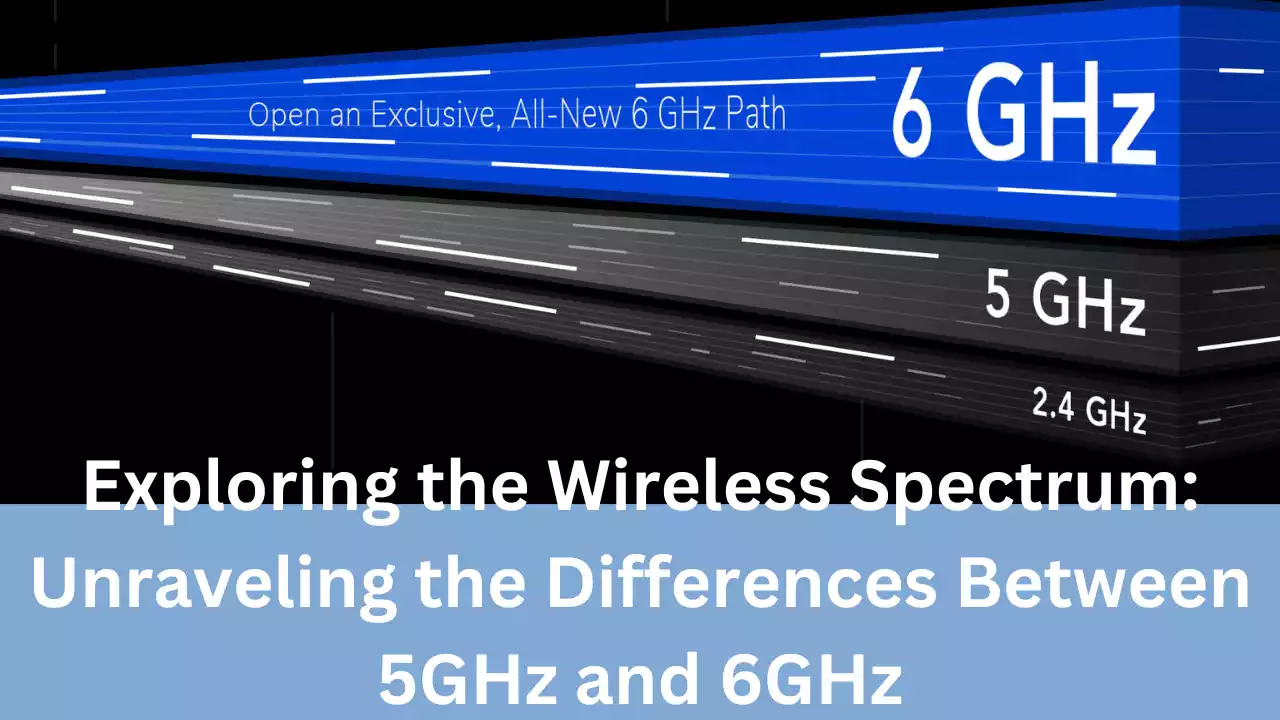In the realm of wireless communication, the selection of frequency bands plays a pivotal role in determining performance, reliability, and overall user experience. Two prominent contenders in this arena are the 5GHz and 6GHz bands. While both offer advantages for modern connectivity, understanding their differences is crucial for optimizing network deployments and enhancing wireless experiences. In this gearupwindows article, we delve into the nuances of the 5GHz and 6GHz spectrums, exploring their distinctive characteristics, applications, and implications for wireless technologies.

1. Frequency Range and Bandwidth
– 5GHz Spectrum: The 5GHz band encompasses frequencies ranging from 5.150 GHz to 5.925 GHz. It offers relatively wide channels and is commonly used for Wi-Fi networks, providing sufficient bandwidth for high-speed data transmission.
– 6GHz Spectrum: In contrast, the 6GHz band spans frequencies from 5.925 GHz to 7.125 GHz. With even broader bandwidth availability compared to 5GHz, the 6GHz spectrum enables higher data rates and enhanced performance for wireless applications.
2. Interference and Congestion
– 5GHz Spectrum: While the 5GHz band provides ample bandwidth, it is more susceptible to interference from neighboring networks, household appliances, and environmental factors. As a result, congestion can occur, impacting network performance in densely populated areas.
– 6GHz Spectrum: With its recent introduction for unlicensed use, the 6GHz band offers a cleaner and less congested spectrum environment. Its higher frequency range reduces interference from legacy devices and enhances the overall reliability of wireless connections.
3. Regulatory Considerations
– 5GHz Spectrum: The 5GHz band has been widely adopted for Wi-Fi and other wireless technologies, with regulatory frameworks established to govern its use. However, as usage increases, regulatory bodies are exploring strategies to mitigate congestion and ensure spectrum efficiency.
– 6GHz Spectrum: Regulatory authorities are progressively opening up the 6GHz band for unlicensed use, recognizing its potential to alleviate congestion and support emerging wireless applications. The recent allocation of the 6GHz spectrum presents new opportunities for innovation while necessitating adherence to regulatory compliance measures.
4. Applications and Use Cases
– 5GHz Spectrum: Wi-Fi networks operating in the 5GHz band are prevalent in homes, offices, public spaces, and enterprise environments. They support a wide range of applications, including internet browsing, streaming media, online gaming, and IoT connectivity.
– 6GHz Spectrum: The 6GHz band holds promise for next-generation wireless technologies, including Wi-Fi 6E and 5G NR (New Radio). Its increased bandwidth and reduced interference make it suitable for bandwidth-intensive applications, ultra-fast internet access, smart city initiatives, and industrial IoT deployments.
Conclusion
While both the 5GHz and 6GHz spectrums contribute to the evolution of wireless communication, their differences in frequency range, interference characteristics, and regulatory landscapes are key factors to consider in network design and deployment. As demand for high-speed, low-latency connectivity continues to rise, understanding the unique attributes of each spectrum band enables stakeholders to harness their respective benefits effectively. Whether optimizing Wi-Fi networks for enhanced performance or paving the way for future wireless innovations, the distinct qualities of the 5GHz and 6GHz spectrums shape the landscape of modern connectivity.
